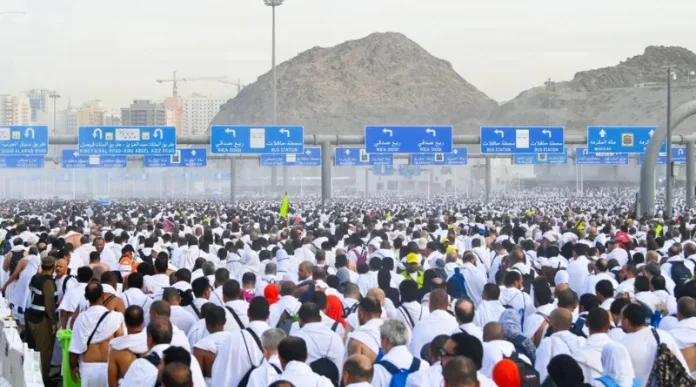The FIFA World Cup is an international celebration of sport, culture, and unity that attracts fans from every corner of the world to witness elite-level soccer in person. Scheduled to take place in Saudi Arabia in 2034, the extreme climate conditions raise critical concerns with respect to player performance, comfortability to fans, and overall safety. This article explains why the intense heat prevalent even during winter months in Saudi Arabia is a grave threat and renders this place unsuitable for hosting the FIFA World Cup.
Saudi Arabia’s Climate: The Core Challenge
Saudi Arabia is famous for its hot temperatures and arid desert climate that tops the chart at the world level. Even in their “cooler” winters, temperatures often reach over 30°C (86°F) in many areas, and even higher in some regions and at certain times of the year.
Conditions are hardly optimal for a very strenuous sport like soccer, where players push themselves for as long as 90 minutes or more, usually under direct sun or high humidity that drives up apparent temperature. Ongoing greenhouse gas emissions are expected to worsen these conditions, resulting in more frequent and intense heat extremes throughout Saudi Arabia over the next fifty years.
Extreme heat also has an extremely well-documented impact on the health, performance, and recovery of athletes. Saudi Arabia sees winter that can still be unacceptably or even outright dangerous to exert oneself intensely. In such conditions, athletes will face a heightened risk of:
Risks to Spectators and Tourists
Fans are not only players, but the World Cup is also a series of events for lovers of football who travel huge distances to watch their favorite teams play and acquaint themselves with the culture of the host country. The frequency of warm days has risen sharply, with an increase of around 13 days per decade, while the occurrence of cold days has declined by about 11 days per decade. Saudi Arabia’s scorching heat poses some obvious risks for such visitors:
Outdoor Fan Zones and Stadium Areas: The outdoor fan zones where football supporters converge, sing, and celebrate will prove almost impossible to maintain.
Travel and Tourism: In addition to an unpleasant experience inside the stadium, Saudi Arabia’s scorching heat can also spoil fan experiences outside.
Health Risks to Vulnerable Populations: Children under the age of 5 and older adults, as well as persons with chronic medical conditions, are at higher risk for heat illnesses.
Limited Air-Conditioned Stadium and Cooling Technologies
While Saudi Arabia has made many air-conditioned stadiums and advanced high-technological cooling, again, these technologies are available but limited.
High Energy Consumption: Using the air-conditioning system in such gigantic stadiums during World Cup events requires high energy, creates serious environmental issues with carbon emissions, and is not sustainable for long-term use.
Limited Influence on Field Temperature in Action: On the face of it, a coolness system might have been installed but in practice, field temperature could well remain hot enough to influence the play of the game.
Risk of System Failures: A dependence on technology to keep stadiums safe from climate risks system failure or power loss at any moment. A technical malfunction within the cooling system could cause players and fans to endure a very hot environment.
Projections indicate a significant increase in the number of days with maximum temperatures above 35°C. The summer months are likely to experience extended periods of extreme heat, especially under scenarios of higher greenhouse gas emissions.
Comparative Concerns: Lessons from the Qatar World Cup
The 2022 World Cup in Qatar offers a useful comparison. To reduce the issues, Qatar also used ultra-state-of-the-art cooling systems in its arenas, but there were also some concessions to logistics in terms of how the tournament was structured-for example, when it took place: during winter.
Many of the tournament’s matches, however, were played in somewhat warm circumstances, and there were often topical worries about heat and players’ and spectators’ well-being and experience of the event. Between 1978 and 2009, average temperatures in Saudi Arabia rose by approximately 0.48°C per decade for maximum temperatures and 0.71°C for minimum temperatures. More recent analyses show this trend has persisted, with minimum temperatures increasing by 0.64°C per decade from 1978 to 2019.
Public Perception and FIFA’s Responsibility to Protect Player and Spectator Welfare
Hosting a World Cup in extreme heat will also open ethical questions for FIFA, considering the organization’s role as a guardian of its athletes’ and spectators’ welfare. Critics argue that with Saudi Arabia, FIFA may be compromising the health of players and spectators for commercial gain.
In this again, justice issues come into play: should players and spectators be made sweat bullets when these could have taken the event elsewhere to a less hostile climatic environment? Saudi Arabia’s mean annual temperatures are projected to exceed 29°C by 2070, signaling a shift toward dangerously high summer heat. Currently, Mecca experiences an annual mean temperature of 30.5°C, with summer averages soaring above 34°C from May through September.
Conclusion
Conclusion Saudi Arabia’s extreme temperature poses huge challenges for a safe and enjoyable World Cup to be hosted. Even though advanced cooling technology and infrastructure development by this nation show an intent to host the tournament, health risks will be high for the players, fans, and local citizens.
From dehydration, heatstroke, and sustainability, the host country of Saudi Arabia poses challenges, meaning that FIFA has enough reasons to review its decision on selecting a host country’s climate in future planning.
Whereas the health, safety, and well-being of participants and spectators remain a top priority in hosting the World Cup, they also remain the basis for choosing venues for the event. If FIFA is to be true to its motto of excellence, sustainability, and inclusivity, refiling the Saudi proposal for hosting the 2034 World Cup becomes imperative.













